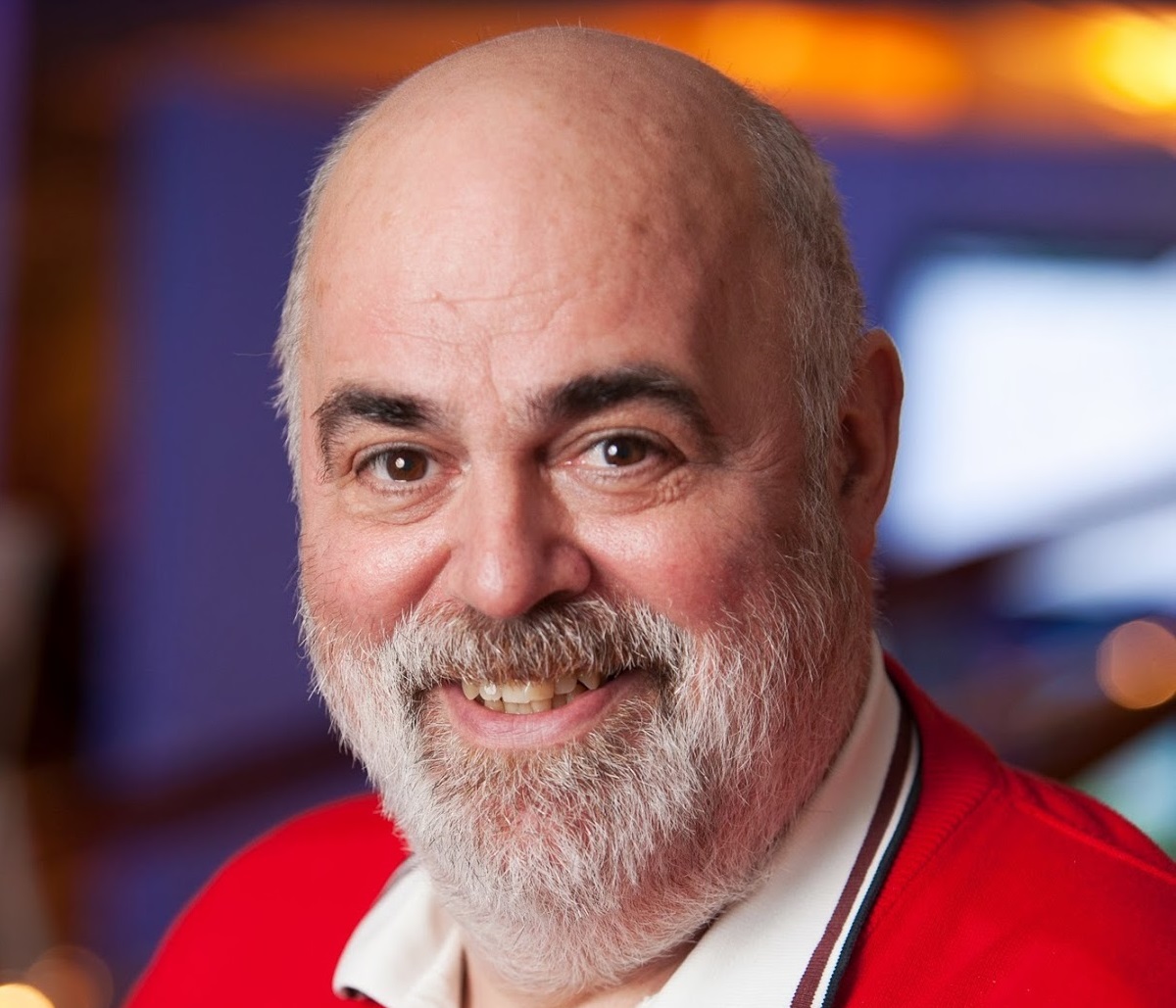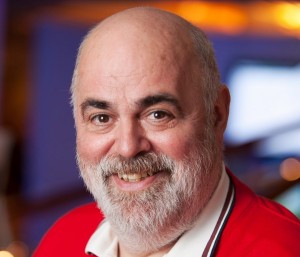Q. You are one busy guy! Your impressive bio lists you as president and co-founder of SEO-PR, an author, regular speaker at internet marketing conferences and staff member of Rutgers Business School. How do you manage to keep up with all of your responsibilities?
A. Would you believe that I work 10 hours a day seven days a week? Well, would you believe that I use smoke a mirrors to make it appear that I’m busier than I really am? Actually, my wife told me back in November 2011 after I finished writing the second edition of YouTube and Video Marketing that I’d better not take time away from my domestic duties to write a third edition or I’d need to get a second wife.
Since then, I’ve contributed some content to four other books, but that’s not as time consuming and it still leaves me time to get my chores done. And speaking at half a dozen internet marketing conferences a year doesn’t really take that much time, although I tend to listen to four to five times more sessions than I speak at.
But that’s my secret for keeping up all the latest developments in this rapidly changing industry. And I only teach a half-day class at the Rutgers Business School once or twice a month, although they often have a camera crew in the back of the room, so my “online” classes appear more often than I appear on campus.
Q. Which role do you enjoy the most, and why?
A. I enjoy all of the above, or I’d stop doing some of these things. Writing, speaking, and teaching require me to find the weekly or monthly signal in the daily noise, which then enables me to solve problems for my clients. And solving problems for my clients enables me to provide some great case studies or tell some remarkable success stories when I’m writing, speaking, and teaching.
Q. Which is the most challenging, and why?
A. Solving problems for my clients is the most challenging. Nobody has the same internal strengths and weaknesses, or faces the same external opportunities and threats. So, helping each of them to solve their unique puzzle takes imagination as well as knowledge.
Q. What do you do when it’s time to leave business behind and unwind (provided you do take time to unwind!)?
A. I watch the Boston Red Sox and the New England Patriots. Although some games can get tense at times, at least I can watch them from a horizontal position on my couch.
Q. You were profiled in Online Marketing Heroes: Interviews with 25 Successful Online Marketing Gurus. What’s it like being an Online Marketing Hero? What makes your strategies unique? How do you stand out from the crowd?
A. Honestly, being an online marketing hero and $2.10 will buy you a cup of coffee at Starbucks. And I’ve already explained what makes my strategies unique. Each client has a unique set of strengths, weaknesses, opportunities, and threats. So, one-size-fits strategies simply don’t work. Now, how do I manage to stand out from the crowd?
Well, many would argue that I’m 6’2” tall and often wear a red Rutgers or Red Sox sweater at conferences so I’m easy to spot. However, some might agree with Jeff Tarter, who once said – quote – “In a profession filled with mental midgets, Greg Jarboe stands (relatively) tall” – unquote.
Q. What’s the biggest lesson you wish every single content marketer would understand going into the content marketing game?A. Measure what matters most. And that’s not soft metrics like brand awareness, which few content marketers actually measure anyway. And it’s not engagement, which even fewer content marketers can define without notes. What matters most is website traffic, higher conversion rates, sales lead quality, and sales. And, if you aren’t using these hard metrics, then you will never be successful at tracking your return on marketing investment (ROMI).
Q. What’s the greatest mistake you see content marketers making in today’s arena?
A. They create low-quality content that isn’t particularly targeted and hope that this will somehow generate better results. Ironically, if they created high-quality content that was tailored to meet the interests of their target audience, they would generate better results.
Q. As an internet marketing speaker at the upcoming Content Marketing Conference in Las Vegas, you’re speaking on Must-Know Secrets from Bad-Ass Publishers. Can you give us one all-important secret every publisher should know?
A. If I told you a secret, then it wouldn’t be a secret anymore, would it? So, how about if I ask one all-important question: “Forward-thinking companies are thinking like old-school publishers: gather ideas, develop stories and publish a steady stream of content that engages readers and keeps them coming back for more. So what made the great publishers so great?”
Now, if you come to my session at the Content Marketing Conference, then you will learn the answer to that question. Now, if this seems like I’m dodging your question, then here’s a spoiler alert: Content needs to be a magnet that attracts a clearly defined audience, but it also needs to be a screen that filters out disinterested or unqualified people if you want to, ultimately, drive profitable customer action.
Q. In your opinion, what makes a publisher bad-ass?
A. Well, back in the late 1980s and early 1990s, Ziff-Davis published PC Magazine, PC Week, and several other special-interest magazines and trade publications. After William B. Ziff Jr. retired in 1993, his sons sold the publishing company for $1.4 billion in 1994. So, I think this makes Ziff-Davis a bad-ass publisher.
Q. What was it like having the William B. Ziff Jr. of Ziff-Davis as your mentor? What’s the greatest business-related lesson he taught you? What’s the greatest personal lesson you learned from him?
A. The greatest business-related lesson Mr. Ziff taught me was counter-intuitive: Ziff-Davis editors didn’t write articles for the typical consumer or average business buyer. They carefully crafted specialized content for narrow targets like “brand specifiers” or “volume buyers.” But this powered the growth of niche publications at a time when general-interest magazines were losing steam.
In today’s world of websites, blogs and social media sites, content marketers can leverage this counter-intuitive insight to reap ROI from this bad-ass publisher’s success. As for my greatest personal lesson, Mr. Ziff once gave me a video of “They Died with Their Boots On.” In the 1941 movie, George Armstrong Custer (Errol Flynn) says his standing order is to “ride to the sound of the guns.” And, during the battle of Gettysburg, Custer doesn’t wait for his official orders to get updated.
He leads his four Michigan cavalry brigades to the most crucial place on the battlefield as fast as possible and defeats J.E.B. “Jeb” Stuart. I’ve adopted this as my own standing order and it’s helped me to seize the opportunities and avoid the pitfalls in press release SEO, YouTube marketing, and content marketing – and still get home by six o’clock.
Q. Tell us more about your role with SEO-PR. What prompted you and the other founders to create the company? What’s an average day in the life like?
A. Google launched Google News in September 2002. I did some searches that month and discovered there were press releases in the results. When I showed my findings to Jamie O’Donnell, the other co-founder of SEO-PR, I said, “If SEOs can optimize a web page for Google, I think we can figure out how to optimize a press release to get high rankings in Google News.” He said, “That’s nice, but if you added a tracking link to that press release, then you’d know how much traffic it generated to a website.”
That’s when we realized that could create a company to offer this service. By early 2003, we had two customers and that’s when we decided to launch SEO-PR in March 2003. Twelve years later, there’s no such thing as an average day. That’s because we’ve diversified our services as the market has mutated.
We added blogger outreach in 2004, video marketing in 2006, social media marketing in 2008, and content marketing in 2010. We both started teaching at Market Motive in 2007. And I started teaching at Rutgers in 2010. Throw in writing a couple of books, writing about 100 blog posts a year, and speaking at half a dozen conferences a year, and the “average day” becomes an oxymoron like “jumbo shrimp.”
Q. What’s it like being on staff of Rutgers Business School? How would you describe today’s content marketing students?
A. I teach in the Rutgers Mini-MBA program, so my “students” are executives working in product PR/corporate communications, and demand gen marketing, or anyone who is responsible for developing a content marketing plan for their organization.
They didn’t learn digital marketing, social media marketing, or viral video marketing when they were undergraduates because they were undergraduates more than 10 years ago when none of these fields existed. Today, they work in companies like Johnson & Johnson, ETS (Educational Testing Service), Cisco, Verizon Wireless, and SonoSite.
They want to know the latest trends, best practices, and most effective strategies. Part of my time is spent “teaching,” but part of each class is spent debating whether or not to use particular tactics or social media platforms. I use case studies to illustrate what works, but the participants are required to create “capstone projects” to apply what they’ve learned to their own companies.
So, being an instructor at the Rutgers Business School is like being a consultant for 30 different content marketers each month. I learn as much from my “students” as they learn from me.
Q. How are students in the classroom different from content marketers already in the field? Is either variety generally more eager, open and easy to teach? Please explain.
A. My “students” are remarkably similar to the content marketers already in the field, because that’s where they come from. If there is one major difference, it’s this: They’ve taken time out of their busy careers to learn new content marketing strategy and tactics from a team of top industry experts. In that sense, they tend to be more eager, open, and easy to teach. And they are more likely to go back to their companies and become much more effective than their remarkably similar peers.
Q. Anything else you’d like our readers to know?
A. Yes, don’t rush out and buy my book, YouTube and Video Marketing. Like I said, it was published in November 2011. At the time, my second edition legitimately claimed to be “Fully updated with new information, including the latest changes to YouTube!”
But today, the only chapter that isn’t out-of-date is Chapter 1: A Short History of YouTube. So, if you want up-to-date information, you may want to read my weekly posts on ReelSEO or monthly posts at ClickZ, The SEM Post, or Momentology.
Thank you!


